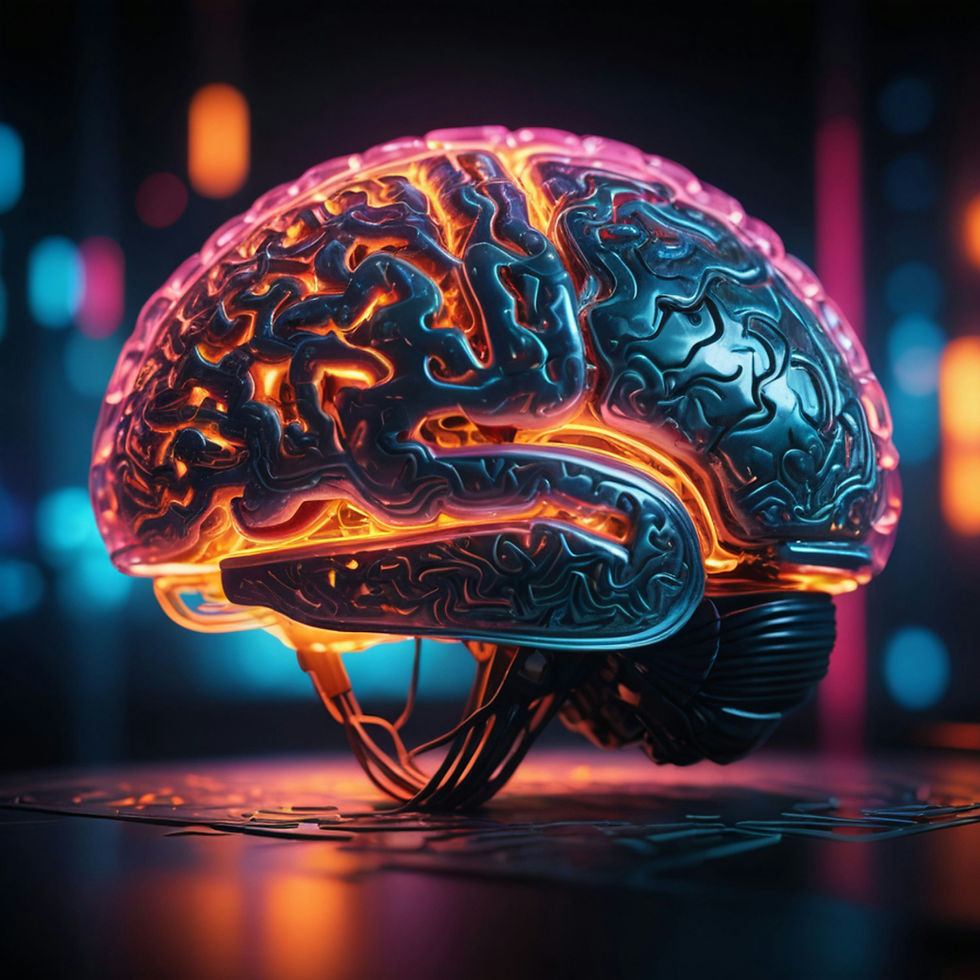Can CRISPR Stop Cows from Fueling Climate Change? Gene Editing Takes Aim at Methane
- Monica Chase

- Sep 10, 2024
- 4 min read
Scientists are using CRISPR to cut methane emissions in cows—innovation or risky DNA experiment?

Picture this: a cow munching on grass in a field, minding its own business, and unknowingly belching out enough methane to fuel climate change. Not quite the idyllic farm life we imagined, right? But don't worry—science has entered the chat. And this time, the hero is CRISPR.
Yep, the gene-editing tool famous for its ability to snip and splice DNA is back, and now it’s taking aim at an unexpected target: cow guts. Specifically, the gassy, methane-producing microbes inside them. It turns out that cows are not naturally inclined to turn into walking methane factories—it’s their gut bacteria that’s to blame. Enter a team of scientists who are asking a bold question: What if we could just... turn it off?
CRISPR: The Gut Whisperer
The big idea is to use CRISPR to edit the microbes in a cow’s gut so they stop producing methane. We’re not talking about growing lab meat or designing glow-in-the-dark cows (though, let’s be honest, that would be pretty cool). Instead, scientists want to develop a type of probiotic pill that could be given to young calves to modify their microbiome early on, stopping methane emissions at the source before they become a problem.
Now, I know what you’re thinking: isn’t CRISPR the tool that helped create “designer babies” and glow-in-the-dark bunnies? Yes, but this time, it’s being used to solve a much smellier problem.
Can CRISPR Solve Climate Change One Moo at a Time?
Here’s the thing: methane, the stuff coming out of cow burps and farts (yep, I said it), is a potent greenhouse gas. It doesn’t hang around as long as carbon dioxide, but it traps way more heat in the short term. That’s why these researchers are so excited. If we could stop cows from producing methane, we’d actually slow down climate change. No kidding.
But—as with any shiny new tech—there’s always a catch. Scientists are still in the early stages of this research, and right now, they’ve only managed to edit a small portion of the microbes in cow stomachs. It’s like trying to build a plane while you’re already in the air—which is great if you’re DARPA, but not so much if you’re, well, everyone else.
The Double-Edged Sword of Gene Editing
This is the part where I get a little philosophical (don’t worry, I’ll keep it light). Gene editing, like CRISPR, is both our salvation and our potential downfall—wrapped up in a neat little package with some sharp scissors. Sure, it can solve problems like methane emissions or diseases like sickle cell, but what if we get it wrong? What if those tiny gut microbes revolt and cows start producing, I don’t know, worse gases? (Not scientifically likely, but stranger things have happened.)
It’s a bit like tinkering under the hood of a car while it’s still moving—except the car is a cow, and the engine is its microbiome. Are we sure we know what we’re doing? Or are we all just hoping this plane/cow hybrid doesn’t crash?
How DARPA’s Mentality Could Save Us (And the Cows)
Speaking of building planes while flying them, let’s talk about Brad Ringeisen. He’s the scientist leading this methane-fighting CRISPR project, and he’s bringing what he calls the “DARPA mentality” to the table. For those who aren’t familiar, DARPA is the U.S. defense agency that gave us the internet, stealth aircraft, and probably half the tech you use on a daily basis. They’re the ultimate “let’s figure it out as we go” agency—and it usually works.
Ringeisen’s approach? Let’s solve the problem for all cows, not just a few. If CRISPR can stop cows from producing methane, why stop there? Goats, sheep, maybe even those methane-releasing permafrost regions in the Arctic—he’s thinking big. It’s like trying to save the planet by editing the smallest things we can: microbes.
The Promise—and Perils—of Playing with DNA
But of course, with great power comes great responsibility. As we venture further into gene-editing territory, we have to be mindful of the unknowns. People are naturally nervous when we start messing with DNA, and for good reason. There are risks we can’t see yet, and unintended consequences could be lurking around the corner.
That said, the promise of CRISPR and climate change is too tempting to ignore. If we can figure out how to tweak these microbes without causing chaos, we might just have a powerful weapon in the fight against climate change. And if we’re lucky, this whole “building the plane while flying” thing will actually land us somewhere good—before the cows beat us to it.
What’s Your Take? Is CRISPR the Future or Are We Just Moo-ving Too Fast?
So, what do you think? Is CRISPR the hero we need to save the planet from gassy cows? Or are we meddling with forces beyond our control? Let’s have some fun with this one—drop a comment below and share your thoughts!
And if you’re a fan of science, ethics, and the fine line between salvation and disaster, you’ll find plenty more to chew on in my blog. (And maybe, just maybe, a little wink to DARPA and the tech that got us here.)
Until next time, I’ll see you in the bookstores.
Monica
Sources: Some information in this post was inspired by an article from The Washington Post on CRISPR's potential to reduce methane emissions in cattle.



Comments